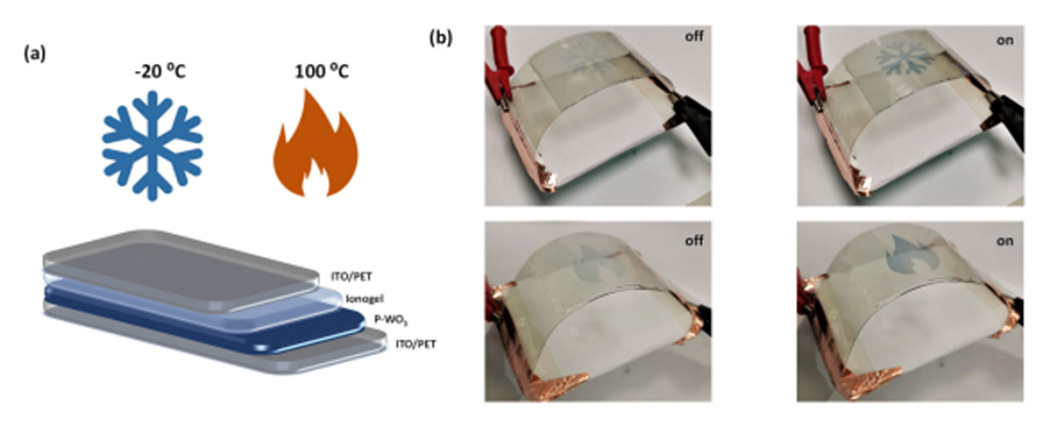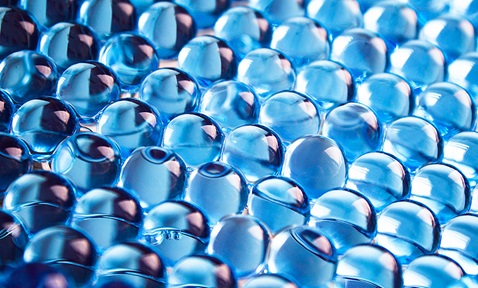
Solid State Electrolyte for Flexible Electrochromic Devices
Synopsis
Electrochromic devices (ECDs) based on quick in-situ polymerisation on solid-state ionogels provide good electrochromic performance, offering high colour contrast and fast response under applied voltage. These devices find uses in diverse applications such as smart glass, mirrors and displays.
Opportunity
Electrochromic devices (ECDs) change optical properties when voltage is applied, finding use in smart glass, electrochromic mirrors and displays. The electrolyte in ECDs plays a crucial role, hosting ions for electrochromic reactions and balancing residual charges, and influencing switching performance.
Technology
The invention relates to solid-state electrolytes comprising ionogel for electrochromic applications and devices (ECDs) via an in-situ polymerisation strategy.
Highly transparent solid-state ionogels can be prepared in less than a minute under ambient conditions. The prepared ionogels possess excellent physicochemical stability, including thermal, electrochemical and air stability, allowing them to perform in various conditions. Benefitting from these properties, the assembled electrochromic devices display high colour contrast and fast response time with good endurance over thousands of switching cycles. The ionogel also shows good compatibility when coupled with deformable substrates (like ultra-thin ITO glass, conductive textile, and ITO-PET substrate), realising flexible electrochromic eye protector and display applications.

Figure 1: (a) Schematic illustration of a transmissive electrochromic display based on ITO-PET substrate. (b) Actual photographs of transmissive electrochromic displays colour switched at -20 (top) and 100 ⁰C (bottom) upon bending.
Applications & Advantages
Applications:
- ECDs have diverse applications beyond smart glass, mirrors, and displays. They can be used in: automotive and aircraft windows, architectural design for energy-efficient lighting, adaptable tinting eyewear and privacy glass.
- ECDs can enhance rear-view mirrors, sun visors and electronic billboards, reducing glare and enabling dynamic displays.
- ECDs serve defence purposes like adaptive camouflage.
Advantages:
- High transparency in visible and part of near-infrared region (380 to 1,250 nm);
- High ionic conductivity in the regime of mS/cm;
- Good thermal stability (from -20 to 100 ⁰C);
- Flexible or deformable with very low Tg; and
- Good electrochromic performance (in terms of optical modulation, response time, stability) with either organic or inorganic electrochromic materials.




.tmb-listing.jpg?Culture=en&sfvrsn=29c7e020_1)

.tmb-listing.jpg?Culture=en&sfvrsn=3b74ec1c_1)
-and-the-coated-wood-(ntu-singapore).tmb-listing.jpg?Culture=en&sfvrsn=624bb80c_1)







